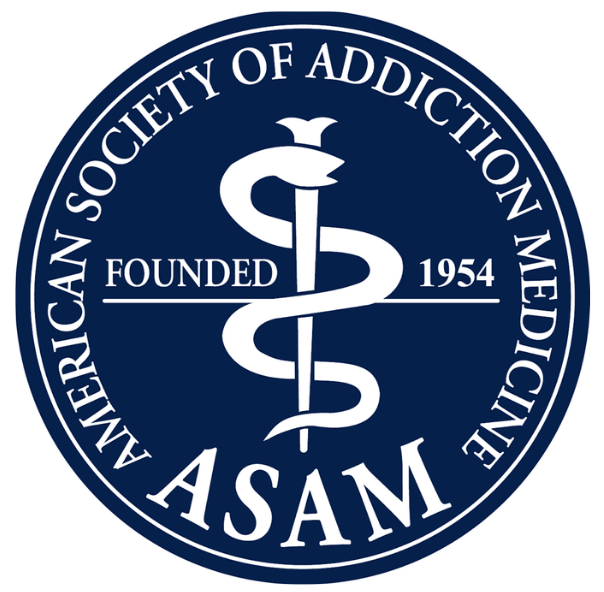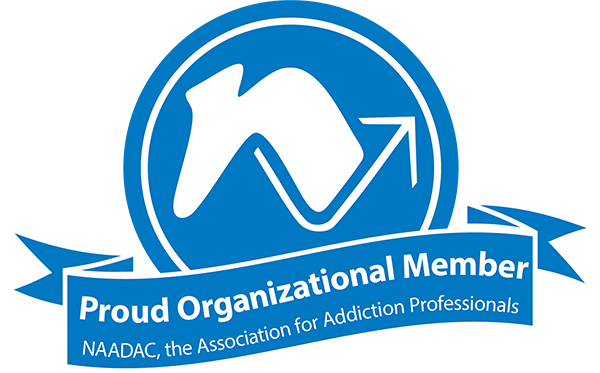Borderline Personality Disorder (BPD) is one of the most commonly discussed and misunderstood mental health conditions. It affects how individuals think, feel, and relate to others, often leading to emotional instability and difficulty maintaining relationships. Understanding BPD can help individuals and families recognize when to seek help and begin the path toward recovery.
What Is Borderline Personality Disorder?
Borderline Personality Disorder (BPD) is a mental health condition characterized by intense and unstable emotions, impulsive behaviors, and difficulties maintaining relationships. People with BPD often experience rapid mood changes, fear of abandonment, feelings of joylessness, and an unstable sense of self. These emotional highs and lows can lead to impulsive decisions and unstable relationships, making daily life challenging for both the individual and their loved ones.
While the exact cause of BPD isn’t fully understood, research suggests that a combination of genetic, environmental, and neurological factors contribute to its development. Traumatic experiences, such as childhood neglect or abuse, can also increase the risk of developing BPD. With proper treatment, people with this condition can learn to manage symptoms and build more stable, fulfilling lives.
How Does BPD Affect Daily Life?
Borderline Personality Disorder can significantly impact how a person feels, thinks, and interacts with others on a day-to-day basis. Emotional instability can make even small stressors feel overwhelming, and relationships may become intense or unpredictable due to fears of rejection or abandonment.
People with BPD may:
- Experience rapid mood swings that make it difficult to maintain emotional balance.
- Struggle with impulsive behaviors such as spending sprees, substance use, or self-harm.
- Have unstable relationships marked by idealization and devaluation cycles.
- Feel chronic emptiness or a lack of clear identity.
- React strongly to perceived criticism or rejection.
These challenges can interfere with work, school, and personal relationships—but with treatment and coping strategies, many individuals learn to regulate emotions, communicate more effectively, and live meaningful, productive lives.
Diagnostic Criteria
According to the Diagnostic and Statistical Manual of Mental Disorders (DSM-5), a person must exhibit at least five of nine core symptoms for a diagnosis of Borderline Personality Disorder. These criteria focus on patterns of instability in mood, relationships, self-image, and behavior that persist over time and cause significant distress or impairment.
Diagnosis should always be made by a licensed mental health professional through a comprehensive evaluation that includes clinical interviews, psychological assessments, and a review of medical and psychiatric history.
BPD vs Other Personality Disorders
Borderline Personality Disorder shares overlapping traits with other personality disorders, but it is distinct in its hallmark features of emotional instability and intense fear of abandonment.
For example:
- BPD vs. Bipolar Disorder: While both involve mood swings, bipolar disorder includes defined manic and depressive episodes, whereas BPD mood shifts are shorter and often triggered by interpersonal stress.
- BPD vs. Narcissistic Personality Disorder (NPD): People with NPD often seek admiration and lack empathy, while those with BPD typically crave closeness but fear rejection and abandonment.
- BPD vs. Histrionic Personality Disorder (HPD): HPD involves attention-seeking behaviors, while BPD centers more on emotional instability and self-destructive tendencies.
Understanding these distinctions is key to ensuring accurate diagnosis and effective treatment planning.
What Are the Signs and Symptoms of Borderline Personality Disorder?
Borderline Personality Disorder (BPD) is marked by a persistent pattern of emotional instability, impulsive behavior, and difficulty maintaining stable relationships or a consistent sense of self. People with BPD often feel emotions more intensely than others, which can lead to impulsive decisions, mood swings, and fear of abandonment.
Common signs and symptoms include:
- Intense fear of abandonment, even when relationships are stable
- Unstable or intense relationships, alternating between idealizing and devaluing others
- Rapid mood changes that can last for hours or days
- Impulsive or self-destructive behaviors, such as substance use, reckless driving, or binge eating
- Chronic feelings of emptiness or worthlessness
- Distorted self-image or shifting sense of identity
- Difficulty controlling anger or frequent outbursts
- Self-harming behaviors or suicidal thoughts and attempts
Symptoms typically appear in adolescence or early adulthood and can vary in severity. However, with proper treatment, many individuals can manage symptoms and lead fulfilling lives.
What Causes BPD?
There is no single cause of Borderline Personality Disorder. Instead, research suggests that a combination of genetic, environmental, and biological factors plays a role in its development. Understanding these influences can help explain why some people are more susceptible to BPD than others.
Genetic Factors
Genetics appears to contribute significantly to the development of BPD. Studies indicate that individuals with a close family member—such as a parent or sibling—with BPD are more likely to develop the disorder themselves. Twin studies have also shown higher rates of BPD among identical twins compared to fraternal twins, suggesting a heritable component.
According to the National Institute of Mental Health (NIMH), research shows that genetic, physical, environmental, and social factors may increase the risk of developing BPD.
Environmental Factors
Environmental influences—particularly during childhood—can greatly affect the likelihood of developing BPD. Many people with the disorder report histories of childhood trauma, including physical, emotional, or sexual abuse, neglect, or unstable family relationships. These experiences can shape how individuals manage emotions, perceive relationships, and form their sense of identity.
A lack of consistent support or exposure to chronic stress may also contribute to the emotional instability seen in BPD. However, not everyone with these experiences develops the disorder, indicating that the environment interacts with other risk factors rather than acting alone.
Biological Factors
Biological differences in brain structure and function may contribute to the emotional sensitivity and impulsivity associated with BPD. Research using brain imaging has found abnormalities in areas that regulate emotions and impulses, such as the amygdala, hippocampus, and prefrontal cortex.
Neurochemical imbalances, particularly involving serotonin, have also been linked to impulsivity and mood dysregulation. These biological factors may help explain why some individuals with BPD experience intense emotional reactions or have difficulty calming down after stressful events.
How Is Borderline Personality Disorder (BPD) Treated?
While Borderline Personality Disorder (BPD) can be challenging to live with, it is highly treatable with the right combination of therapy, medication, and self-help strategies. Treatment focuses on helping individuals regulate emotions, reduce impulsive behaviors, and build healthier relationships. With ongoing care, many people with BPD experience significant improvement in their symptoms and quality of life.
Psychotherapy
Psychotherapy—also known as “talk therapy”—is the first-line treatment for Borderline Personality Disorder. It helps individuals better understand their emotions, behaviors, and relationships while learning skills to manage stress and improve communication.
Common therapies for BPD include:
- Dialectical Behavior Therapy (DBT): Specifically designed for BPD, DBT teaches mindfulness, emotional regulation, distress tolerance, and interpersonal effectiveness.
- Cognitive Behavioral Therapy (CBT): Helps identify and change distorted thinking patterns that contribute to negative emotions and impulsive behavior.
- Schema-Focused Therapy: Combines cognitive and psychodynamic techniques to help individuals recognize and change deep-seated patterns that developed during childhood.
- Mentalization-Based Therapy (MBT): Improves the ability to understand one’s own and others’ mental states, leading to healthier emotional responses.
Psychotherapy is often long-term, but it can lead to lasting emotional stability and stronger relationships.
Medication
While no medication specifically treats Borderline Personality Disorder, certain prescriptions can help manage co-occurring symptoms such as depression, anxiety, or mood swings. Medication is usually used alongside therapy rather than as a standalone treatment.
Antidepressants
Antidepressants—such as SSRIs (selective serotonin reuptake inhibitors)—may help reduce symptoms like sadness, irritability, or anxiety that often occur with BPD. These medications can stabilize mood and improve overall emotional well-being, especially when combined with therapy.
Mood Stabilizers
Mood stabilizers, such as lamotrigine or valproate, may be prescribed to help manage intense mood swings and impulsivity. These medications can reduce the frequency and severity of emotional outbursts, helping individuals feel more balanced and in control.
Strategies for Self-Help
In addition to professional treatment, many people with BPD benefit from developing personal coping strategies to manage symptoms between therapy sessions. Helpful self-help practices include:
- Mindfulness exercises, such as deep breathing or meditation, to stay grounded in the present moment.
- Regular physical activity to reduce stress and boost mood.
- Maintaining healthy routines, including consistent sleep, nutrition, and self-care habits.
- Tracking emotions and triggers to better understand what situations cause distress.
- Building a strong support system of friends, family, or support groups who understand BPD.
These strategies empower individuals to take an active role in their recovery and maintain emotional stability over time.
Professional Help for Borderline Personality Disorder
Seeking professional help is a critical step toward recovery from BPD. Mental health professionals can provide structured therapy, medication management, and crisis intervention when necessary. Aliya Veterans is happy to provide specialized residential and outpatient therapy programs, which can help with this.
When Should You Get Help for BPD?
You should seek help for Borderline Personality Disorder if you experience:
- Persistent feelings of emptiness or hopelessness
- Intense mood swings or emotional outbursts
- Frequent conflicts in relationships
- Impulsive or self-destructive behaviors
- Thoughts of self-harm or suicide
If you or someone you know is in immediate danger, call 988 (the Suicide and Crisis Lifeline) or go to the nearest emergency room.
Get Help Today
If you or someone you know is a person with borderline personality, you’re not alone. Many people with borderline personality face overwhelming emotions and behavior patterns, intense anger, and experiences of self-harm and suicidal thoughts.
Whether you’ve been diagnosed with BPD or are noticing borderline personality disorder symptoms, including unstable relationships, mood swings, or negative affect, there is real help available.
At the heart of recovery is understanding the symptoms and causes, proper diagnosing of borderline personality disorder, and compassionate mental health care.
Borderline Personality Disorder often overlaps with mood disorders, anxiety disorders, and substance use disorders—but with the right management and treatment, healing is possible.
Even if symptoms seem manageable, early treatment can prevent worsening emotional distress and improve long-term outcomes. BPD is a complex but treatable condition—and with the right care, recovery and emotional balance are within reach.





